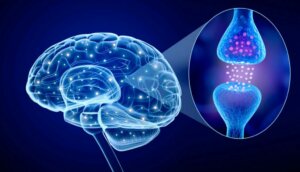What Is Asperger Syndrome?

Asperger syndrome is a developmental disorder that falls within the autism spectrum. It mainly affects reciprocal social interaction, verbal and non-verbal communication, acceptance of changes, flexibility of thought, and having narrow and obsessive fields of interest.
Even though Asperger syndrome is much more common than other types of autism, it’s still a rare condition. The data suggest that it tends to affect men more than women.
Characteristics of patients with Asperger syndrome

One of the most common characteristics observed in these people is that they understand the social world in a different way. That is why it’s common for them to have behavior that we don’t fully understand.
As we have said, these patients have problems in different aspects:
- Social interaction: They’re characterized by having poor social skills. They don’t notice social cues, so they don’t give adequate social and emotional responses. In addition, they tend to spend a lot of time alone; some are happy like that, others are not. They can focus on the small details and often not be able to see the big picture of what is happening in a certain situation.
- Communication: They often have problems understanding spoken language, so care must be taken with non-literal expressions and metaphors.
- Narrow interests and concerns: One of the most distinctive marks of Asperger syndrome is preoccupation and obsession with certain subjects. These tend to be concerns in the intellectual area that change over time, but not in intensity.
- Repetitive routines and inflexibility: They often impose rigid routines on themselves and those around them.
These routines tend to change over time as the child matures. It will also be easier to reason with them.
Causes

Today the exact causes that trigger this syndrome aren’t known. However, experts agree that it’s a condition that occurs during brain development.
Depending on the affected area, the child will exhibit behavior similar to those of autistic patients, but it isn’t exactly the same disorder.
What really happens in the brain of a patient with Asperger syndrome is that there’s a difficulty in the neural connection that helps us process information.
In this sense, these children have a different development from the rest and, therefore, the brain grows and develops in an altered way.
It’s also believed that its origin is largely genetic and, therefore, relatively independent of past experiences and in the way in which one interacts with the environment (although these factors could trigger or aggravate symptoms)
How is Asperger syndrome different from autism?

Firstly, people with this syndrome can develop an autonomous and independent vision as the person matures. This fact doesn’t happen with autistic people, as it’s more difficult for them to be completely independent.
Another difference is the delay in developing language. Asperger sufferers don’t have this difficulty, while for autistic people it is one of the distinctive and characteristic features.
On the other hand, people with Asperger syndrome can have problems when it comes to learning. However, these problems aren’t related to their intellectual capacity, but rather to their inattention and difficulty concentrating.
Finally, autistic people have no need to interact with others. On the other hand, Asperger children do tend to want to socialize and make friends, but they have difficulties doing so.
Can it be treated?
A treatment plan can only be established when parents, educators and doctors work together. However, there are some protection rules to consider for a child with this syndrome. You need to try to fulfill them all.
- They don’t like to have their routine broken: they must first mentalize before applying any change in their life.
- Rules must be applied – with great care and flexibility.
- Use areas of learning that interest you: It’s recommended that teachers make the most of the areas that awaken the child the most and try to make the teachings specific and objective.
- You can reward the child with activities that interest them when they have performed a task satisfactorily.
- Use visual tools in education – they tend to respond very well to them.
- Avoid confrontation: Having deficits in social skills, these children don’t understand the displays of authority and anger. As a result, they tend to become more inflexible.
- They must be taught to make friends: Encouraging their participation in a group and reinforcing their colleagues who also encourage them to participate.
On the other hand, pharmacological medication is contraindicated in the treatment process. However, in specific and needy situations such as states of anxiety, depression, or inattention, a series of drugs can be administered under medical prescription.
Asperger syndrome is a developmental disorder that falls within the autism spectrum. It mainly affects reciprocal social interaction, verbal and non-verbal communication, acceptance of changes, flexibility of thought, and having narrow and obsessive fields of interest.
Even though Asperger syndrome is much more common than other types of autism, it’s still a rare condition. The data suggest that it tends to affect men more than women.
Characteristics of patients with Asperger syndrome

One of the most common characteristics observed in these people is that they understand the social world in a different way. That is why it’s common for them to have behavior that we don’t fully understand.
As we have said, these patients have problems in different aspects:
- Social interaction: They’re characterized by having poor social skills. They don’t notice social cues, so they don’t give adequate social and emotional responses. In addition, they tend to spend a lot of time alone; some are happy like that, others are not. They can focus on the small details and often not be able to see the big picture of what is happening in a certain situation.
- Communication: They often have problems understanding spoken language, so care must be taken with non-literal expressions and metaphors.
- Narrow interests and concerns: One of the most distinctive marks of Asperger syndrome is preoccupation and obsession with certain subjects. These tend to be concerns in the intellectual area that change over time, but not in intensity.
- Repetitive routines and inflexibility: They often impose rigid routines on themselves and those around them.
These routines tend to change over time as the child matures. It will also be easier to reason with them.
Causes

Today the exact causes that trigger this syndrome aren’t known. However, experts agree that it’s a condition that occurs during brain development.
Depending on the affected area, the child will exhibit behavior similar to those of autistic patients, but it isn’t exactly the same disorder.
What really happens in the brain of a patient with Asperger syndrome is that there’s a difficulty in the neural connection that helps us process information.
In this sense, these children have a different development from the rest and, therefore, the brain grows and develops in an altered way.
It’s also believed that its origin is largely genetic and, therefore, relatively independent of past experiences and in the way in which one interacts with the environment (although these factors could trigger or aggravate symptoms)
How is Asperger syndrome different from autism?

Firstly, people with this syndrome can develop an autonomous and independent vision as the person matures. This fact doesn’t happen with autistic people, as it’s more difficult for them to be completely independent.
Another difference is the delay in developing language. Asperger sufferers don’t have this difficulty, while for autistic people it is one of the distinctive and characteristic features.
On the other hand, people with Asperger syndrome can have problems when it comes to learning. However, these problems aren’t related to their intellectual capacity, but rather to their inattention and difficulty concentrating.
Finally, autistic people have no need to interact with others. On the other hand, Asperger children do tend to want to socialize and make friends, but they have difficulties doing so.
Can it be treated?
A treatment plan can only be established when parents, educators and doctors work together. However, there are some protection rules to consider for a child with this syndrome. You need to try to fulfill them all.
- They don’t like to have their routine broken: they must first mentalize before applying any change in their life.
- Rules must be applied – with great care and flexibility.
- Use areas of learning that interest you: It’s recommended that teachers make the most of the areas that awaken the child the most and try to make the teachings specific and objective.
- You can reward the child with activities that interest them when they have performed a task satisfactorily.
- Use visual tools in education – they tend to respond very well to them.
- Avoid confrontation: Having deficits in social skills, these children don’t understand the displays of authority and anger. As a result, they tend to become more inflexible.
- They must be taught to make friends: Encouraging their participation in a group and reinforcing their colleagues who also encourage them to participate.
On the other hand, pharmacological medication is contraindicated in the treatment process. However, in specific and needy situations such as states of anxiety, depression, or inattention, a series of drugs can be administered under medical prescription.
- Basile, D. (2003). Sindrome De Asperger. Psicoadolescencia.Com.Ar.
- Attwood, T. (2002). SINDROME DE ASPERGER: Una guía para padres y profesionales. Paidós, Barcelona.
- Sintes, A., Arranz, B., Ramirez, N., Rueda, I., & San, L. (2011). Sindrome de asperger ¿Un trastorno del desarrollo diagnosticable en la edad adulta? Actas Espanolas de Psiquiatria.
- Attwood, T. (2011). La escolarización correcta del niño con Síndrome de Asperger. Autismo Diario.
- Ramírez Serrano, M. C. (2010). ¿Conocemos el Sindrome de Asperger? Revista Digital Para Profesionales de La Enseñanza.
Este texto se ofrece únicamente con propósitos informativos y no reemplaza la consulta con un profesional. Ante dudas, consulta a tu especialista.







